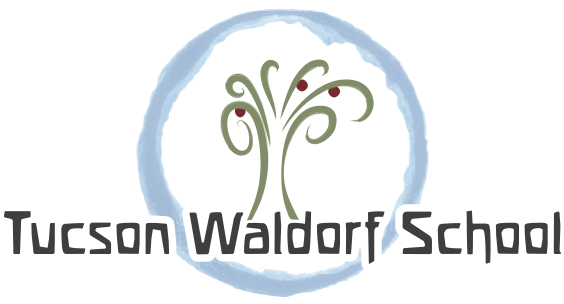Children in second grade, savvy now to the ways of school, retain the imitative and self-focused consciousness of early childhood even as they look more to the outer world to learn from the experiences of others. They are beginning to form the consciousness of self that exists independent of others, and they are looking for models in the world outside of family to guide their way. The curriculum at school helps guide this search with the study of fables, legends, and stories of saints from around the world. Exploring the archetypal notions of good and evil, fables offer lessons of morality and personal responsibility, while simultaneously appealing to the trickster personality of the second grader. Stories of the saints give the students examples of people in the world whose own actions carry them to a place of nobility.
Main Learning Objectives
Language Arts
The study of reading and writing continues in second grade, as students learn to look beyond the letter and the word to the construction of sentences. Again employing story and song, the teacher continues to help the students build vocabulary and grow in their understanding of the rhyme and rhythm of language. The stories of the saints and the fables, captured by the students in their Main Lesson books, become class readers, and teachers begin to work with dictation as students’ control of the written word grows.
Recitation and class dramatic performances continue to explore the richness of language as human expression. The class presents a dramatic production of the story of a saint or a fable.
Mathematics
Students in the second grade continue to work with the four arithmetic operations, and the teacher leads them in a more hands-on study of multiplication, whereby the children create the patterns demonstrating the inherent rhythms of the numbers. Thus begins the early stages of memorization of the multiplication tables.
Science
Foundational work for the study of science continues in second grade with nature stories and exercises to strengthen powers of observation and memory in the students. The qualities of animals are revealed in fable form, and the responsibilities of the human are illustrated in the stories of the saints.
Art
As in first grade, art permeates all lessons of the year. Children continue to develop their control and aesthetic sense using colored pencils, beeswax crayons, and watercolor paints. Modeling with beeswax continues as a three-dimensional art form, and teachers sometimes work with sand and clay to strengthen the students’ experience of form.
Form drawing, capturing the movement of line on paper, continues to advance in complexity, building on the work in first grade. The teacher chooses forms whose movements have an awakening tendency, supporting alertness and concentration, as well as those, which are a precursor to handwriting skills. The senses of movement and balance and a feeling for left and right are strengthened in this work.
Specialty Subjects
Foreign Language
Weekly lessons in Spanish (continuing from Grade 1) build vocabulary and a growing repertoire of poems and songs.
Practical Arts
The study of fiber arts continues from Grade 1. Children learn to crochet by completing a pot holder, they begin to knit a vest and simple sewing projects are offered.
Music
As in first grade, music permeates the day in second grade. Children continue to sing and practice the pentatonic flute as a class.
Movement Education
Cooperative games, with the consequent building of individual skills, help the children learn timing, coordination, and spatial awareness as they play with one another in class.
